The Feudal Heritage of Gévaudan |
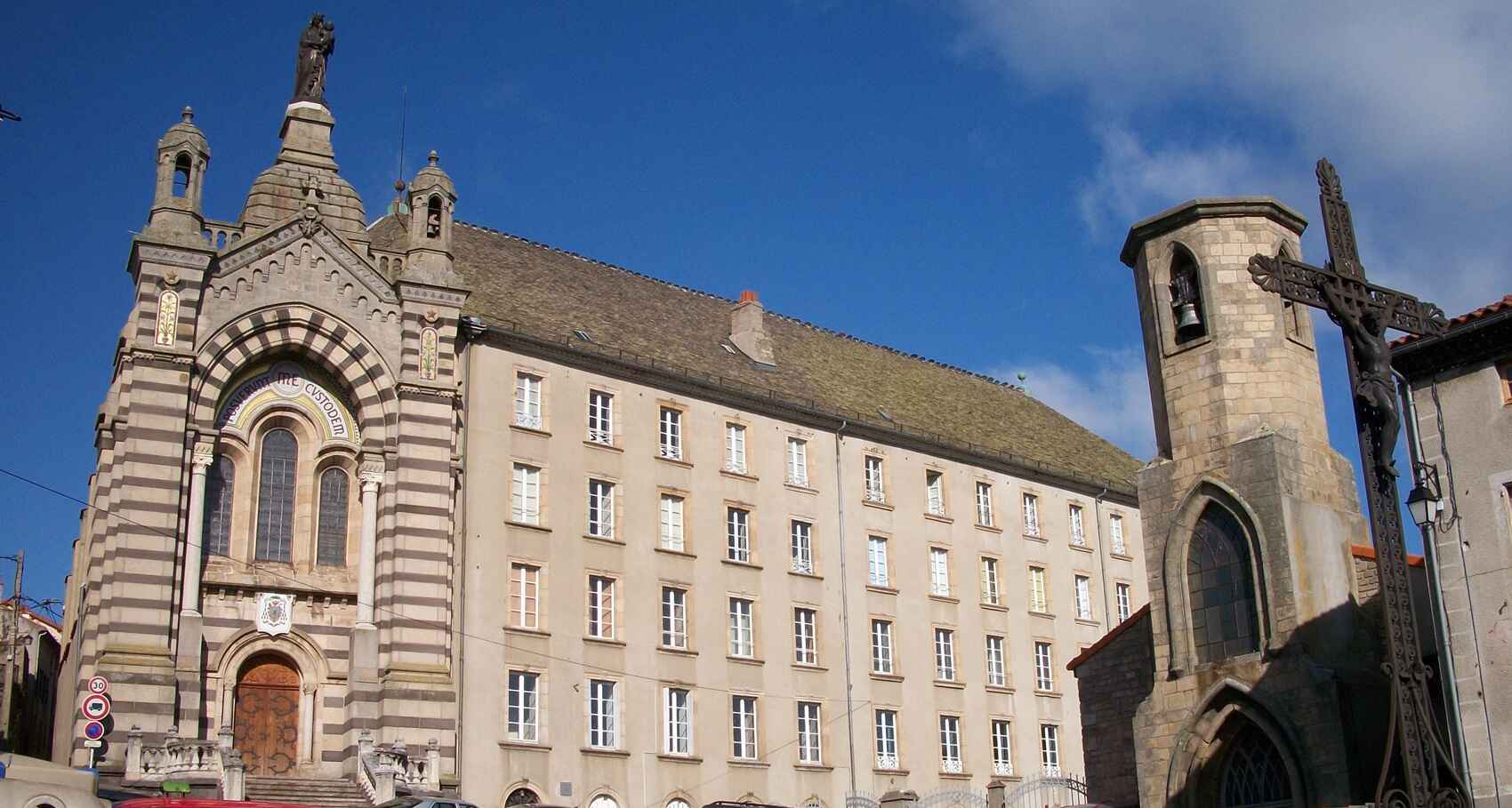
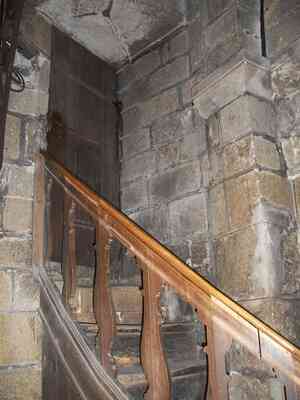 In Gévaudan, as in the Merovingian provinces, power delegations were granted to "companions" or "counts" to oversee and ensure royal authority. However, following the weakening of the monarchy, these temporary power delegations became permanent and soon hereditary, with the advent of the Carolingians. Through this process, the feudal estates were established. It happened that simple officers or officials, appointed by the crown, embedded themselves as lords of the land. Thus, the counties of Gévaudan were created.
In Gévaudan, as in the Merovingian provinces, power delegations were granted to "companions" or "counts" to oversee and ensure royal authority. However, following the weakening of the monarchy, these temporary power delegations became permanent and soon hereditary, with the advent of the Carolingians. Through this process, the feudal estates were established. It happened that simple officers or officials, appointed by the crown, embedded themselves as lords of the land. Thus, the counties of Gévaudan were created.
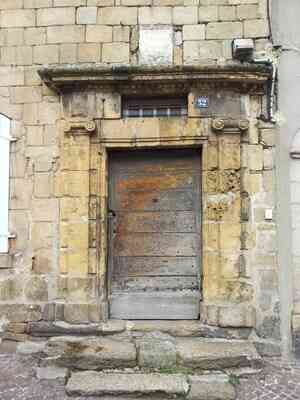 To administer the vast expanse of the domain under his control, the count, a high-ranking individual, appointed "vicomtes" (vice gerens comitis) or, if he had children, divided his land and assigned a "vicomte" to each.
To administer the vast expanse of the domain under his control, the count, a high-ranking individual, appointed "vicomtes" (vice gerens comitis) or, if he had children, divided his land and assigned a "vicomte" to each.
There is no exact certainty to know the lineage that provided significant inheritance to the author of the act of founding the church and monastery of Langogne, but his heritage seems to be established as follows:
Count Pons, who governed Rouergue and Gévaudan, transmitted, by way of succession, his inheritance to his brother Bertrand, already vicomte of Rouergue, who, in turn, passed it to the eldest of his sons, Richard, the vicomte of Milhaud, and to the younger, Etienne, the vicomte of Gévaudan.
Thus, the name Etienne appears in the "charter" (according to the conventional spelling) of the donation drafted in the following form: "sunt autem iste ressitac in Comitatu Gabalitano in vicaria Milla censé in villa quod dicitur Lingonia seeus ripan Eleria", which translates freely to: "All this is located in the County of Gabale in the district of Milliac, the area called Langogne, along the banks of the Allier".
The domain "Milliac", a Celtic name that became "Médio-lanum" by the addition of the suffix "acum", included the castrum Gabale, later the Roman oppidum or Mont-Milan.
It is reasonable to think that the given domain had a sufficiently large population to fill the nave of the sanctuary to be built and cooperate in the exploitation of the vast adjoining territory. It is also likely that the vicomte had to reside in Langogne, rather than in the ruined Javols, the insignificant town of Mende, or the grim fortress of Grèzes in a very cold region.
The History of the lands of Arverne and Velay sheds light on the creation of the monastery. It explains that St-Calmin or Carmélius, an Auvergnat by birth and from a senatorial family, who governed his land, after returning from Rome, had passed to the Lerins islands. He took some Benedictine monks to found the abbey of Caméli or St-Chaffre and made Eudes the first abbot. The latter came from a family in Orange and had been a deacon at Saint-Paul-Trois-Châteaux. His brother had revitalized the abbey of Montana in Arverne.
St-Chaffre had under his jurisdiction St-Pierre-du-Puy, Chamalières in Velay, and Fraissinet near Monastier. Now, Pierre, the abbot of St-Pierre, became bishop of Viviers in 993. He advised vicomte Etienne, who had land in his diocese, to found a monastery and church in his vicomte. Calmin promised to provide the monks. However, he was not to see the realization of his project and passed away, as did his wife Namadie. The monastery of Mauzac, in Auvergne, received their burial. However, his promises were kept, and St-Chaffre took Langogne under his protection.
Thus, Etienne and his wife Anglemonde or Almedis, advanced in age and childless, worried about the imminent end of the world, had, according to legend, an identical dream that led them to bequeath their earthly possessions to a pious work to acquire celestial grace on Judgment Day. They went to Rome. Pope Gregory V encouraged, as is thought, their plan and promised them holy relics and to send a bull covering the foundation of his protection and placing it under the dependence of the papacy "ad vitam oeternam". Thus, Dom Guy, abbot of St-Chaffre, received benefits: in Vivarais, 35 farms, in the district of Bozon and the hamlet of Felgères; in Gévaudan, 4 farms and a mill, plus, in Langogne, the estates of Mas-Richard, Nirgoult, Monteil, Cheylaret, and St-Clément; in the land of Grèzes, the village of Claurie with pastures and woods.
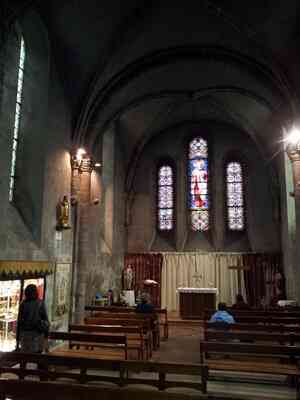
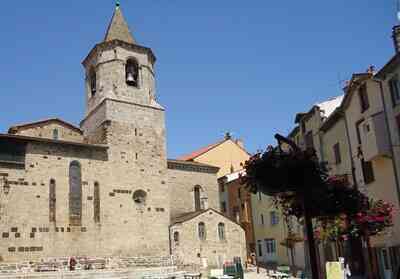 The bishops of Mende, Puy-en-Velay, and Viviers approved these gifts. The priory remained under the dependence of St-Chaffre but under the authority of a lord-prior directly reporting to the seat of St-Pierre and escaping the domination of ecclesiastical and lay counts.
The bishops of Mende, Puy-en-Velay, and Viviers approved these gifts. The priory remained under the dependence of St-Chaffre but under the authority of a lord-prior directly reporting to the seat of St-Pierre and escaping the domination of ecclesiastical and lay counts.
Vicomte Etienne and his wife made a second trip to Rome to "offer their donation at the tomb of St-Pierre". Sylvester II, the new pope, was Gerbert of Aurillac, an eminent prelate, a great scholar, who, it is said, invented the weight clock and was considered a sorcerer. He had been able, in any case, to impose upon the princes the "truce of God". He welcomed the generous patrons of Langogne and presented them with relics, highly sought after from St-Gervais and St-Protais, as well as a piece of the true cross.
In less than five years, the church, monastery, and castle were built.
What were these buildings that were later deformed or ruined by the bandits of the "Society of Madness", by the English routiers, by the religionists of Mathieu de Merle, and finally under the Revolution? The church remained, for the most part, intact, except for its facade and its tower, which collapsed and were then patched or rebuilt in a style different from that of their original construction, as well as by a deformation due to clumsy additions made to enlarge the main vessel. The two towers that flanked the facade were indeed collapsed, rebuilt, collapsed again, and then replaced, in 1829, by the only tower that was decided to be placed on the choir. The facade seems to date back to the end of the 11th century. It was designed in a disparate Gothic style, unlike the Romanesque-Auvergne style of the building. A portal is created between half columns with flutes and topped with a stained glass window that is not lacking in style. The whole is even skewed in relation to the median line of the central nave. On either side of the entrance, two columns with bases and capitals remain, suggesting that they served as pedestals for the statues of the parish's patron saints.
The naves forming the arms of the cross have been recklessly extended, in a poor copy of the building's style. The apse bears the imprint of clumsy retouches.
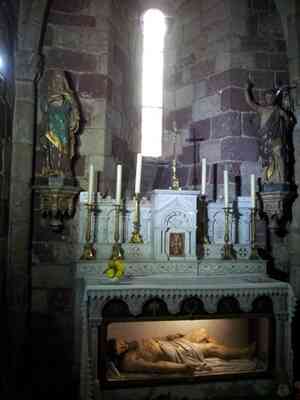 Despite these clumsy reconstructions, the church, dating back ten centuries, retains its original layout. It follows the shape of the time and outlines a cross whose main part would consist of three adjoining and parallel naves, with arcades and semi-circular vaults; the central one being larger, wider, and taller. At the transept, they are crossed by other naves forming the arms of the cross and connected by large, massive pilasters with engaged and cantoned columns. The top of the cross is constituted by the choir and its side aisles in a rounded apse covered in a half-dome.
Despite these clumsy reconstructions, the church, dating back ten centuries, retains its original layout. It follows the shape of the time and outlines a cross whose main part would consist of three adjoining and parallel naves, with arcades and semi-circular vaults; the central one being larger, wider, and taller. At the transept, they are crossed by other naves forming the arms of the cross and connected by large, massive pilasters with engaged and cantoned columns. The top of the cross is constituted by the choir and its side aisles in a rounded apse covered in a half-dome.
The construction is heavy, massive, made of hard and fine granite, which is not found in quarries around Langogne. Capitals with corbels crown the columns at the birth of the arches and the curved inflections. Their ornamentation is simple, naive; it features rudimentary acanthus leaves, fruits, flowers, chimeras, rustic and symbolic demons representing slander, calumny, lust, the just, the sinner. The overall effect is ingenious, with poor sculpture; talent has not followed inspiration.
Clumsy notches have carved the pillars on each side of the choir to embed artless ironwork barriers. At the back of the sanctuary, that is, behind the facade wall, a banal gallery intended to support an organ has been erected, which has the serious flaw of hiding the beautiful stained glass window.
The sanctuary does not possess any valuable work, no paintings, tapestries, carpentry, altars, attracting attention. It only retains its artistic imprint of pure Romanesque style, making it the pearl of Gévaudan and classifying it as a historical monument.
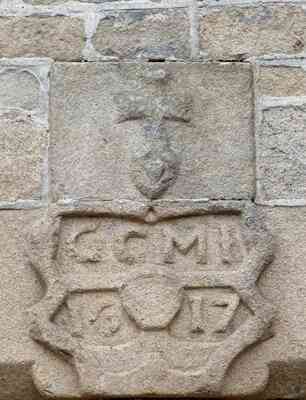 From the original castle, there remains neither trace nor memory. Even the date of its disappearance is unknown. Perhaps it was incorporated into the monastery. But almost nothing would remain of it either, except for personal memories that show some buildings, without art, from a monastery that, in a quadrilateral, enclosed a courtyard with a well in its midst. This courtyard was delimited: to the North, by the church; to the East, by the remaining building on which the chapel was built, an ugly wart that clings to the sanctuary; to the West, a body of building, now rebuilt, continued the lateral nave in the arm of the cross of the church and the presbytery, retaining the porch, still existing, as a means of access to the said courtyard and the sanctuary; to the South, a large multi-story building constituted the main premises of the monastery and served only as storage for fodder and, on the ground floor, as sheds and stables. The facade of this building, outside the quadrilateral, opened onto a part of the now called "Monks' Square".
From the original castle, there remains neither trace nor memory. Even the date of its disappearance is unknown. Perhaps it was incorporated into the monastery. But almost nothing would remain of it either, except for personal memories that show some buildings, without art, from a monastery that, in a quadrilateral, enclosed a courtyard with a well in its midst. This courtyard was delimited: to the North, by the church; to the East, by the remaining building on which the chapel was built, an ugly wart that clings to the sanctuary; to the West, a body of building, now rebuilt, continued the lateral nave in the arm of the cross of the church and the presbytery, retaining the porch, still existing, as a means of access to the said courtyard and the sanctuary; to the South, a large multi-story building constituted the main premises of the monastery and served only as storage for fodder and, on the ground floor, as sheds and stables. The facade of this building, outside the quadrilateral, opened onto a part of the now called "Monks' Square".
At the time, the Mayor, Mr. de Verdelhan des Molles, recklessly delivered to the pickaxe of 5 demolishers what remained of the monastery, erasing a significant page of local history.
As for the chapel that opens to the right of the entrance of the church, it appears to have been carved into an unesthetic mass of masonry, which historiographers have converted into an ancient pagan temple, transformed into a Christian oratory, and then incorporated into the building of the Benedictine sanctuary. This random assumption has no other basis, as it has been said, than the constant indentation, and moreover verified, of masonry masses in the ground, at a measured cadence that might date back to the time of Roman occupation, the establishment of its foundations.
Furthermore, some writers have attributed, in the unlimited realm of imagination, a fabulous antiquity to the statue of the Virgin honored in this place. Either they trace it back to a two-headed goddess coming from the shores of the hypothetical dried lake of Ponteyre, to settle at the junction of the Allier and the Langouyrou; or they have attributed to it the fame of an implausible donation of a holy icon by Pope Sylvester II. It is appropriate, with honest impartiality, to bring the legend back to simple historical truth.
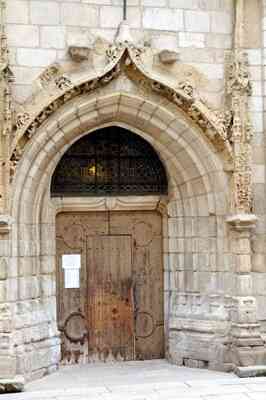 The Virgin, N.-D. de Tout-Pouvoir, is depicted by a two-headed statue, with the heads placed one in front of the other, emerging from a barely rough-hewn wood block, lacking arms and legs. The figures lack aesthetics, grace, and are pitifully painted in colors unrelated to the dark brown hue of the Palestinian icons to which the statue is connected. This unexplained daubing, moreover, dates only back to the year 1900, the date of the so-called "crown" festivities, relating to no commemoration and having no other object than a cultic manifestation. Previously, for the faithful, it was known under the name "black Virgin", in reminder of the dark brown nuance that was hers.
The Virgin, N.-D. de Tout-Pouvoir, is depicted by a two-headed statue, with the heads placed one in front of the other, emerging from a barely rough-hewn wood block, lacking arms and legs. The figures lack aesthetics, grace, and are pitifully painted in colors unrelated to the dark brown hue of the Palestinian icons to which the statue is connected. This unexplained daubing, moreover, dates only back to the year 1900, the date of the so-called "crown" festivities, relating to no commemoration and having no other object than a cultic manifestation. Previously, for the faithful, it was known under the name "black Virgin", in reminder of the dark brown nuance that was hers.
The Virgin and Jesus-Child are dressed in imitation damask and adorned with flashy jewelry to discourage theft. Their head is crowned with golden metal crowns set with multicolored glass cabochons.
Much has been speculated about the origin of this statue to attribute it an antiquity it does not have, that it cannot have. Here is the demonstration, in all objectivity.
It has been claimed that it was given by Pope Sylvester II to the vicomtesse Almadis "during a third trip made to Rome". However, she made only two visits to the papal city, one in 998 and the other 5 years later. There was never any mention of the gift of a Virgin, but only of relics of saints and a piece of the true cross, given to vicomte Etienne.
Of equal value remains the described fabrication, supposedly to revive a cult to the Virgin that had fallen into disuse. It is thus presented: "On this day, February 11, 1449, under the reign of Charles VII and the episcopate of Guy de la Panouse, in the name of Pierre de Cayssac, lord-prior of Langogne, and Jean Chapelle, priest of the place, Jacques de Colombet presented himself at the castle of Charpieu, near Mende, before Etienne Teresi, episcopal notary, to request him to draft an authentic copy of an old, worn, and difficult-to-read parchment (paululum abrasatain lecturamque difficilem)...
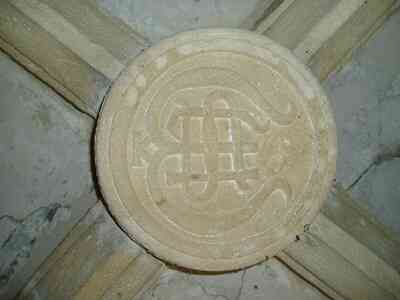 This lost parchment and the supposed authentic copy remaining unfound only recounted a text, which was merely an opinion, expressed in writing and wrapped in reservations, declaring: "We have heard and believe it to be true that Agelmonde went to find, for the third time, the Sovereign Pontiff..." nothing prevented the vicomtesse from reporting on this hypothetical third journey... who knows? perhaps a Virgin?...
This lost parchment and the supposed authentic copy remaining unfound only recounted a text, which was merely an opinion, expressed in writing and wrapped in reservations, declaring: "We have heard and believe it to be true that Agelmonde went to find, for the third time, the Sovereign Pontiff..." nothing prevented the vicomtesse from reporting on this hypothetical third journey... who knows? perhaps a Virgin?...
Not only does this uncontrollable assumption render uncertain the attribution of antiquity to the Madonna honored in the church's chapel, but its statuary dismisses the legend.
In France, no devotion to the Virgin existed before the 12th century. The first representations of the Mother of Christ were only noted in the 13th century, and one can still guess that their representation usurped the place reserved for Jesus. The oldest is that of Chartres. However, it only gained curiosity due to a holy tunic that legend said had been given to Charlemagne by an Eastern emperor and handed to the cathedral by Charles the Bald.
One characteristic marked the first Virgins. None were crowned; a simple veil covered their hair. All were represented sitting, displaying the Christ Child in front of their lap and constituted, in sum, merely a support altar, with all recognition and devotion directed towards Jesus.
In Clermont, at the cathedral and at the Romanesque church of N.-D. du Port, there were shown "Majestatum Sanctae Mariae", also seated, holding Jesus on their knees. Their busts were reliquaries containing hair from Mary, a piece of pallium, a garment woven by her hands. There, too, the veneration was exclusively for the Christ Child.
The most renowned Virgin was undoubtedly the Black Virgin of Puy. Popes, kings, knights, troubadours, and the great crowd of pilgrims came to kneel on the lava slab of her altar, after having climbed the endless staircase of her cathedral, with the strange decorations of Eastern domes. It had been brought to Puy by St. Louis, who had received it from the Sudan.
The Virgin of Langogne is an exact reproduction of it: two poorly shaped heads, placed one in front of the other, emerging from a barely hewn wood block, without arms, nor legs. The dark complexion perfectly relates to an African representation.
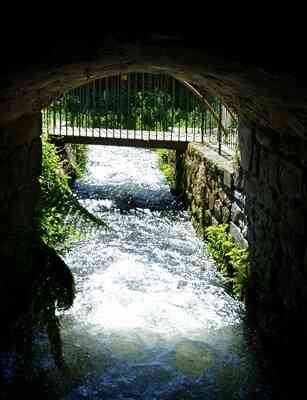 The reputation of the Virgin of Puy earned it numerous imitations. Therefore, it is only natural that in their basilica of Langogne, the Benedictines inaugurated a statue identical to those in their other sanctuaries of St-Pierre-du-Puy, Chamalières, Fraissinet, St-Chaffre...
The reputation of the Virgin of Puy earned it numerous imitations. Therefore, it is only natural that in their basilica of Langogne, the Benedictines inaugurated a statue identical to those in their other sanctuaries of St-Pierre-du-Puy, Chamalières, Fraissinet, St-Chaffre...
The icon from the idolatrous Sudan only became a Madonna once raised on her altar; she had neither the contour nor the beauty of the refined art of the reign of Louis IX, so a more harmonious representation, in statuary, was to be applied from that moment, in the representation of the Virgin, to give her, with personal prestige, a growing rise in veneration. From now on, she would no longer be in a crouched position. She acquires a personality, stands upright, holds in her arms a blessing Jesus, like the statues of Virgins from Mont-Anis and the Good Mother of Marseille.
Once this glorification is crossed, she will appear alone, in her All-Power, directly receiving supplications and prayers that she will have to fulfill. It is the Virgin of Lourdes who dispenses her graces and performs her miracles.
Without a doubt, there will be variations due to devotional influences or artistic impressions, such as the "Pietà" overwhelmed by pain, weakened at the descent from the cross or at the edge of the sepulcher, but it concerns only "Mater Dolorosa". More generally, the Virgin stands in a mantle of purity, her head crowned with the crown of her All-Power, as queen of Heaven, she spreads her welcoming arms in "Refugium peccatorum". These explanations demonstrate that the Virgin of Langogne cannot have the antiquity that has been attempted to be attributed to her. She ranks among the Palestinian virgins of the type of the Black Virgin of Puy. Moreover, the following account clearly establishes the implantation of the worship of the Madonna of Mont-Anis in Langogne and specifies the establishment of the devotion that is dedicated to her. Although the original statue has likely disappeared under the Revolution.
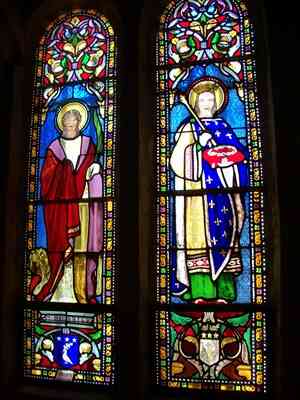 On several occasions, since there is only probability and no certainty of their existence, the Virgins of the sanctuary would have been destroyed. First during the incursions of the bandits of the "Society of Madness", then when the religionists of Mathieu de Merle ruined the monastery, toppled the facade and towers of the church, burned altars, statues, furniture, took precious objects and sacred vessels. Finally, when, in 1792, the sans-culottes held an autodafé of everything contained in the monastery and church; plundered the treasures considered national goods; even brought down the bells to transport them to Mende for the purpose of making cannons.
On several occasions, since there is only probability and no certainty of their existence, the Virgins of the sanctuary would have been destroyed. First during the incursions of the bandits of the "Society of Madness", then when the religionists of Mathieu de Merle ruined the monastery, toppled the facade and towers of the church, burned altars, statues, furniture, took precious objects and sacred vessels. Finally, when, in 1792, the sans-culottes held an autodafé of everything contained in the monastery and church; plundered the treasures considered national goods; even brought down the bells to transport them to Mende for the purpose of making cannons.
A report, which must be regarded as apocryphal, claimed that a certain Tantoine, an apothecary, had removed the statue of the Virgin from the pyre, to take it away, bury it in his garden, while there is a manifest impossibility in this version. How could Tantoine, in front of the crowd of arsonists, have dared to pull a voluminous statue from the fire to take it, when it is known that this character was considered suspicious and that a search had just been made at his home because he was suspected of hiding outlaws?
The conviction that the statue of the Virgin honored in Langogne was indeed a reproduction of that of Puy is confirmed by the following facts. In June 1578, it is believed, the population went "to the planted stone" to welcome the "black Virgin" that was brought from the capital Vellave. Processionally, monks, priests, consuls, and the faithful, with "great music and songs," led the new Madonna to the improvised altar of the parish church, built for the occasion, while waiting for the current chapel of N.-D. de Tout-Pouvoir, which was coming out of its ruins and was in the process of restoration, to be ready to receive her.
There were laudatory sermons, hymns of thanksgiving, blessings, and occasion songs, amidst a pious and grateful crowd for the memorable miracle that the "black Virgin" had granted to the city of Langogne.
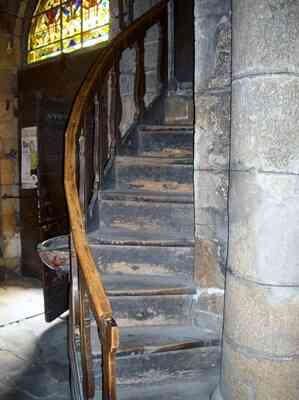 As a result of the misery following the belligerence, the terrible plague "the plague, for it must be called by its name" was ravaging the region, to the point that 2,000 people had succumbed, an enormous figure for the time. The inhabitants of the city, horrified, crowded into the basilica to implore mercy from Heaven. At this moment, the new prior from St-Pierre-du-Puy, Farnus, who had great faith in the Virgin of N.-D. du Puy, came. He made his flock share his trust and invoking the Madonna, who had performed miracles in Velay for several centuries, he solemnly promised, on behalf of the population, that if Langogne was spared from the plague, a statue in her likeness would be erected and honored in her church.
As a result of the misery following the belligerence, the terrible plague "the plague, for it must be called by its name" was ravaging the region, to the point that 2,000 people had succumbed, an enormous figure for the time. The inhabitants of the city, horrified, crowded into the basilica to implore mercy from Heaven. At this moment, the new prior from St-Pierre-du-Puy, Farnus, who had great faith in the Virgin of N.-D. du Puy, came. He made his flock share his trust and invoking the Madonna, who had performed miracles in Velay for several centuries, he solemnly promised, on behalf of the population, that if Langogne was spared from the plague, a statue in her likeness would be erected and honored in her church.
Of course, precautions were taken to avoid the epidemic, but undeniably the miracle was accomplished, and the city escaped the plague. Therefore, to observe the sworn promise, a delegation was immediately sent to Puy to seek a statue identical in all respects to the miraculous Sudanese icon.
Every year, a commemorative feast of inauguration and thanksgiving, towards the savior of Langogne, was celebrated with great pomp. The successive priors Antoine Juliany, in 1585, and Antoine Robin, in 1589, Benedictine lords-priors, made sure to mention the miracle. Only in 1597 was the black Virgin, brought back from Puy, transferred to the crypt-chapel, finally restored. Monsignor Adam de Heurtelou, bishop of Mende, enriched "the Virgin who had saved Langogne from the plague" with indulgences. And, despite the efforts of the legend commentators, it must be admitted that there was still no mention of N.-D. de Tout-Pouvoir.
In conclusion, it is certain that no statue of the Virgin has survived the vandalism that has afflicted the church of Langogne. It is almost certain that the current N.-D. de Tout-Pouvoir, despite the paint job it has been given, remains a faithful reproduction of the "black Virgin" of Puy. The attempt to discover an age for the "rotten and friable wood" of the statue, attempted by a former priest, Mr. Raynal, would undoubtedly have more success today with advances in science. It is also almost certain that the previously stated facts would not be disproved.
To conclude, it is worth noting that the so-called "crown festivities" were celebrated in 1900. Seven bishops, including Monsignor Bonnet, who was from Langogne, and Father Pie (Pierre-Armand Sabadel), superior of the order of Capuchins, a high personality also born in Langogne, participated along with the crowd of faithful who came from the surrounding areas. The surprise was to see the old black virgin appear colored and carmine, which the old inhabitants of the town had always known and who wondered why they had wanted to erase the dark Palestinian hue of their Madonna.
Former holiday hotel with a garden along the Allier, L'Etoile Guest House is located in La Bastide-Puylaurent between Lozere, Ardeche, and the Cevennes in the mountains of Southern France. At the crossroads of GR®7, GR®70 Stevenson Path, GR®72, GR®700 Regordane Way, GR®470 Allier River springs and gorges, GRP® Cevenol, Ardechoise Mountains, Margeride. Numerous loop trails for hiking and one-day biking excursions. Ideal for a relaxing and hiking getaway.
Copyright©etoile.fr